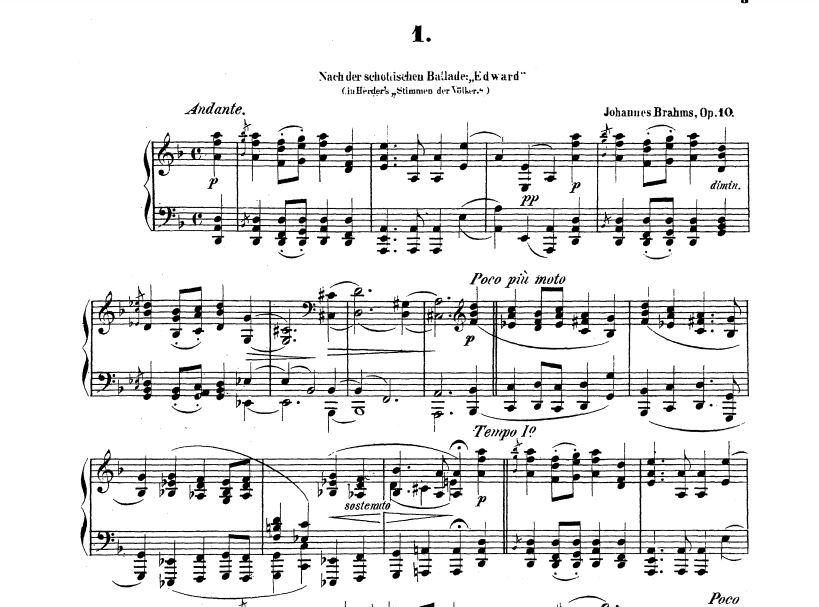Music Theory Resoucers, Piano Lessons
JOHANNES BRAHMS: BALLADE OP 10, NO 1
JOHANNES BRAHMS: BALLADE OP 10, NO 1
Johannes Brahms
J. Brahms was a composer and pianist of the Romantic period. He is considered one of the best 19th century german composers.
His dedication to music was extremely well and beautiful. Brahms mostly composed for symphony orchestra, chamber ensembles, piano, organ and, furthermore for voice and chorus.
As a pianist, he was called virtuoso and performed and premiered many of his own works all by himself. Although he was born in Hamburg (Germany), he spent most of his life in Vienna (Austria).
As a composer, he was a perfectionist, often destroying finished pieces he deemed unworthy. In addition, at the age of 57, Brahms decided that he was finished with composing but who would be able to stop his mind and creativity? Of course, he couldn’t stop which followed in composing some of beautiful and well-known works such as Clarinet Sonatas, Trio and Quintet. Nowadays, he is widely considered one of the greatest composers of the 19th century.
As he left priceless pieces for piano, I would like to present the first Ballade from opus 10 in D minor. Personally, I so adore the whole opus that one can often hear me calling it a ‘Royal’ one. Brahms wrote this opus in 1854 (1856 published by Breitkopf & Härtel in Leipzig) and No. 1 is best-known, often called mythological and demonic by musicologists. Although the whole opus has 4 movements, this is the only one with source material- a Scottish ballad entitled Edward that tells a tale of deception and murder in a medieval royal family. Though the text hasn’t been exactly matched to the music, it is still a basis for the short themes and motives that represent the characters.
Brahms found this folk ballad in Johann Gottfried Herder’s anthology “Stimmen der Volker’’ suggesting us that he originally intended to compose a vocal work but abandoned this idea.

Ballade op.10 n1
First Ballade has three parts, composed in ABA’ structure:
– Section A consists of a two-part melody, the first marked Andante and the second Poco piu moto (in the form of a dialogue in which Edward’s mother questions her son, while Edward first dissimulates, then confesses that he has just killed his father, and departs cursing his mother-who apparently put Edward up to the crime in the first place). Those parts are repeated twice but with some changes the second time.
– The B section (‘confession’ takes the form of an extended crescendo focused in D major) is built from moving chords but at a faster tempo (Allegro ma non troppo).
– The section A’ is a return in D minor with a variation of the Andante melody and a new accompaniment in left hand (mother left alone, contemplating the consequences of her counsels in horrified desolation).
I will be performing this beautiful piece at WKMT Festival on 18th November and you are all cordially invited to attend The Festival and hear really nice music.
If you are interested in seeing other performances at WKMT festivals, you can go here:
JOHANNES BRAHMS BALLADE OP 10 NO 1
#wkmtteachers #adultpianolessons #pianolessonslondon #brahmscomposer #pianoteachers
